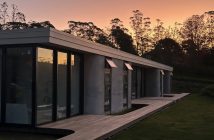Sustainability and environmental awareness have set the tone for 2020 and beyond, and companies are shifting their preferences accordingly
Companies are implementing more eco-friendly policies, green spaces, and innovative materials into their workspaces. This is also helping to address employee health and wellbeing, which is an increasingly important goal for companies going forward.
Most of all, interior design is distancing itself from the cold and clinical feel of classic office spaces; instead, designers strive to make office spaces welcoming and homely, turning the design of office spaces towards comfort.
Approaching commercial interior design
“To develop a strong design narrative, it’s key to have an understanding of who will be interacting with your space, their needs, and the experience you want them to have,” says Studio 11 Principal and Co-Founder of Design, Kellie Sirna.
“It begins with active listening,” says Pacific Office Interiors Studio Director, Jenifer Halverson.
“We find that by getting curious, we reveal our client’s known and unrealized needs. This dialog helps identify and prioritize the relevant services required to provide our clients with truly transformational solutions.”
“Designing the most effective place for an organization to thrive and succeed ultimately has three aspects,” Design Principal Mark Hirons at CannonDesign explains.
“Learn – Research and glean a deep understanding of the client, priorities, and parameters. Use meaningful data to understand current behaviors to inform the design and where hidden/ stretch opportunities may lie.
Listen – Understand the client’s vision and their aspirations to ultimately have the space tell their story – what makes a firm unique and attracts talent to come and stay.
Create – Translate ideas into placemaking; creating unique settings that enrich the daily lives of those the space impacts.”
What office interior design trends could be successful in 2020?
“One office design trend I predict success for in 2020 is a focus on integrating sustainable design touches into the workplace,” says Sirna.
“By incorporating sustainable fabrics and repurposing or upcycling furniture, companies can really embrace an ethos of environmental consciousness. Creating more sustainable workspaces is one-way companies can drive awareness for the issue.”
Hirons believes the following will strongly influence design this year:
- Authentic brand immersion– leveraging the context of a setting along with well-crafted messaging to make memorable experiences for guests and staff alike are increasingly vital.
- Well-being – offering a more complete focus on all aspects of wellness within the workplace; encouraging a healthy life for all is critical to ensuring everyone is at their best. Some of the facets of this will likely be:
- Acoustics (intellectual wellness)- provide enjoyable focus spaces that limit distractions and foster deeper individual thought that balance the highly visible collaborative settings
- Connectivity (social wellness) – foster a sense of community within organizations at different scales to support a range of socialization and relationship building. For example, provide the small one-on-one booth settings all the way to the town hall environments to allow the settings to best match the type of interaction desired.
- Movement (physical wellness) – promote destination settings and support more movement between spaces via engaging paths and stairways; supplement with settings and ergonomics that offer various postures throughout the day.
- Connection to nature (environmental wellbeing)- from infusing daylight, framing views, integrating concepts rooted in biophilia, layering and patterning, etc., all enrich the quality of the experience.
- Choice –providing a broad spectrum of spaces that are tailored for personal productivity and an organization’s culture, offering the diversity of settings to ensure all are optimized in how they can best contribute to an organization
Infinity Group Design Strategist, Amanda Corso, adds:
- Acoustics are and will continue to be a successful trend. Each office design needs to account for the factors and levels of noise that need to be addressed to make it a functional space. The application of acoustics, as well as the understanding of how they work and how they should be applied, are important in any design. As soon as someone wants an open office with exposed ceilings and concrete floors that’s the designer’s green light to start brainstorming on how to solve for the biggest design problem of the year – less noise and distraction.
- Mindfulness in the workplace – etiquette and teaching the appropriate behaviors based on the style of the office.
- Natural light and designing with the appropriate styles and needs for indoor lighting are both equally important. Biodynamic lighting creates a balance of both, regardless of where you are sitting in the space. It can mirror natural sunlight conditions while also regulating your circadian rhythm and provide a healthier workspace.
- “Neighborhoods” – Co-working spaces that create community and purpose as well as inspire teams to work together.
What trends in terms of colors, textures, and patterns should businesses be aware of in the upcoming year?
“In 2020, businesses could be more aware of the myriad of fairly turnkey ways of making an office space feel less one dimensional,” says Sirna.
“Layer rugs in waiting areas or meeting spaces to create a sense of comfort for your colleagues to gather and collaborate. Lighting is incredibly important. Integrating dimmers or table lamps will give your team more freedom to create more personalized working spaces that work best for them and their changing daily needs.”
“I’m seeing lots of softer palettes that are also appearing in residential and hospitality designs,” says Halverson.
“There seems to be an overall desire to have soothing and calm environments regardless of the activity.”
“Patterns are becoming more organic and are reflecting more of nature’s geometry,” says Corso.
“With this also comes the idea that some patterns can subconsciously affect people’s moods and feelings in a space.
“Some color trends in the built environment can come directly from fashion trends and what’s hot on the runway. Bold and darker moody tones are coming into play to create more drama and a sense of relaxation. Mirrors in the workplace could make a comeback as a more rustic distressed element.”




